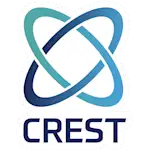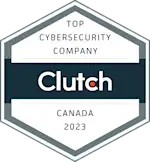Blog How to Improve Network Security Management
- Firstly, What is Network Security Management?
- 1. Physical Asset Management
- 2. Virtual Asset Management
- 2. Storage Management
- 3. Software Management
- 5 Steps to Improve Network Security Management in 2025
- Step 1: Stay Abreast of Password and Passkey Best Practices
- Step 2: Build A Vulnerability Management Program
- Step 3: Ensure Firewalls Are Properly Configured
- Step 4: Develop Data Backup Solutions
- Examples Of Network Security Management Tasks
- Conclusion
Would you like to learn more?
Download our Pentest Sourcing Guide to learn everything you need to know to successfully plan, scope, and execute your penetration testing projects.
Managing and securing your network from threat actors begins with a strategic, integrated plan.
Due to the steady increase in both remote and hybrid workplaces, cyber threats targeting organizations who utilize the Internet for email, web applications, or information sharing are prime targets for phishing, ransomware, and other targeted cybersecurity attacks.
In 2025 and beyond, it's integral to identify risks before they become headlines. In this article, our ethical hackers outline the foundation for how to improve network security management to fortify your organization against increasingly sophisticated attacks.
Firstly, What is Network Security Management?
Network security management is defined as the act of managing access to network resources and controlling the access to these resources by both internal and external parties. Policies and procedures are created to support your network security management plan, as well as to ensure it is aligned with your organization’s short and long-term objectives.
An integral component of network security management is the effective identification of all network assets: each asset within the business should be categorized according to its type and value to the business. An asset management system will provide an inventory of corporate issued devices, identify ownership of the asset, identify software installed, and track the lifecycle of the asset within the organization.
1. Physical Asset Management
Physical asset management compasses the management of devices connected to the business network.
These can be on-site or operated at another physical location:
Servers
Printers
Mobile Devices
Workstations
Hypervisor hosts
2. Virtual Asset Management
Virtual assets are business systems that do not require hardware owned by the business directly, but are hosted on the cloud or through a managed services provider.
Examples of these include:
Cloud-based assets (AWS, Azure, Google Cloud)
Virtual desktop services
Security and software agents
MSP provided systems
2. Storage Management
Storage management includes technology that leverages both computer components and devices to store data in a digital format to be retrieved later time.
Examples of storage management assets include:
Physical and Virtual Backups
Removable Storage Media
Network Attached Server (NAS)
Storage Area Network (SAN)
Cloud Storage
3. Software Management
Software management orbits around the set of instructions used to perform computer instructions and execute specific tasks.
These are:
Open source– programs or code available for public distribution, can be modified and shared.
Closed source– proprietary code, not available for public modification.
Freeware– Software that can be downloaded and installed free of charge.
Software licenses– Contractual use of software, perpetual or subscription-based
Shared software licenses– Allows multiple users to share an application at the same time on the same computer.
Asset identification/management is a core component of an effective network security management plan in 2025.
5 Steps to Improve Network Security Management in 2025
To begin, all organizations should prioritize taking inventory of network resources (including current network and architectural diagrams.) Following completion of the inventory, creating a repository of documentation listing all up-to-date procedures, protocols, access, and technical responsibilities is recommended.
It is advised to ensure that all relevant IT staff have clear directions on their day-to-day network management tasks, with cross-training within the team encouraged.
Step 1: Stay Abreast of Password and Passkey Best Practices
Using the current standards, a password of 8 characters can be cracked within seconds to minutes, while a 12-character password may take hours to days. Increasing the length to 16 characters increases the average time for brute-forcing to several months, and a 20-character password could take decades to crack. A 256-bit AES encryption key, often used for safeguarding sensitive data, could take billions of years to crack even with a supercomputer.
Following these guidelines, it is recommended that master passwords incorporate:
Uppercase letters
Lowercase letters
Numeric digits
Non-alphanumeric characters such as & $ * and !
Network security management protocols oftentimes recommend utilizing a password management system to store passwords for security tools to ensure that access is not tied to specific employees.
Step 2: Build A Vulnerability Management Program
Ensure the operating system and any running software is current and patched to the most recent level per vendor recommendations on a regular basis. This will help reduce opportunities for threat actors taking advantage of vulnerabilities.
A good vulnerability management system should also include a process for deploying network OS upgrades when zero days are released.You must patch all the software on the network, including operating systems across devices and servers, applications, and firmware in the devices/hardware.It is critical not to overlook that network, storage, and other enterprise devices also run operating systems and firmware and must be patched regularly.
Step 3: Ensure Firewalls Are Properly Configured
Network firewalls should be strategically placed in your organization to control outbound and inbound internet access, as well as cross-domain and lateral access between environments.Enterprise assets that host web applications are best protected by a Web Application Firewall.
Next-Gen Firewalls provide application-based services as well as network-based security signatures. Maintaining firewalls can quickly become complicated; consider finding a firewall partner for more complex enterprises.
Step 4: Develop Data Backup Solutions
Backup solutions and tools—while it is practical to back up data manually, the majority of organizations rely on a technology solution to ensure systems are backed up routinely and consistently.
Backup Administrator— Every organization should designate a person to be responsible for backups. That person should ensure that backup systems are properly configured, verified on a routine basis and that critical data is actually backed up.
Backup Scope & Schedule— An organization must develop a backup policy, specifying which files and systems are sufficiently important to be backed up and how frequently data should be backed up.
Recovery Point Objective (RPO)— An organization’s tolerance to sacrifice data in the event of a disaster is defined by the frequency of backups. If backups are conducted once daily, the RPO is 24 hours. The lower the recovery point objective (RPO), the more data storage, computational, and network resources are required to do regular backups.
Recovery Time Objective (RTO)— An organization’s recovery time objective (RTO) is the time it takes to restore data or systems from backup and restore regular operations.
Cloning data and restoring systems can take time when dealing with complex data volumes and/or off-premises backups, and robust technical solutions are required to achieve a low RTO.
Examples Of Network Security Management Tasks
Securing and managing the network covers the entire infrastructure, starting at the endpoints, web application servers, directory services, email, network gateways, and the cloud.
Tese systems can be complex depending on the number of applications, users, and endpoints. To manage effectively, each area can be broken down into its requirements and maintained by various teams simultaneously to perform the associated task. The objective of creating sub-components of each task is that it provides the opportunity for efficiency and continuous management.Listed below are several tasks that are vital to the success of your security program.
Secure local network resources– Ensure anti-virus is current and functioning on all endpoints. Adding EDR to endpoints is necessary due to malware evasion techniques by threat actors today.
Enforce least privilege or need to know model– Secure data by limiting access to only authorized personal within the organization.
Secure access to corporate devices– Ensure laptops/desktops are within directory services and accessible via username and password.
Secure mobile device infrastructure– Mobile devices should be managed by a mobile device management (MDM) solution
.Ensure computer images are current– New devices created from a ‘gold image’ should have latest operating system and approved software. Once connected to network, updates should be pulled down to ensure devices have the latest patches.
Ensure new policies are applied immediately– Any changes to policies that are new, or zero day should be pushed out across the organization by some form of push management software.
Incident response– Ensure policy for lost computers is communicated to support administrators to deal with data loss or detect attempts to break into systems.
Enforce Email protection/Spam detection– Verify that your corporate email solution has antivirus protection enabled for outbound and inbound email. Enable spam filtering and include a method for employees to self-report an attempted phish email.
Conclusion
When it comes to how to improve network security management, the best time is the present. How secure are you in your organization's security infrastructure?
Here at Packetlabs, our penetration testing services are 100% tester-driven: this is a testament to our commitment to both quality and security. We strive to ensure that the best test results are delivered to our clients. Our in-depth testing ensures that no stone is left unturned, and even the most minute of weaknesses can be found and eliminated.
Our team is made up of highly experienced professionals with some of the industry’s most sought-after certifications, such as CREST, OSCP, CEH, and CISSP.
Contact us today or join our newsletter for cybersecurity education and implementation that goes beyond the checkbox.
Let's Connect
Share your details, and a member of our team will be in touch soon.
Explore in-depth resources from our ethical hackers to assist you and your team’s cyber-related decisions.

September 13 - Blog
Why Multi-Factor Authentication is Not Enough
Knowing is half the battle, and the use and abuse of common frameworks shed insight into what defenders need to do to build defense in depth.

November 19 - Blog
The Top Cybersecurity Statistics for 2024
The top cybersecurity statistics for 2024 can help inform your organization's security strategies for 2025 and beyond. Learn more today.

October 24 - Blog
Packetlabs at SecTor 2024
Packetlabs is thrilled to have been a part of SecTor 2024. Learn more about our top takeaway's from this year's Black Hat event.







